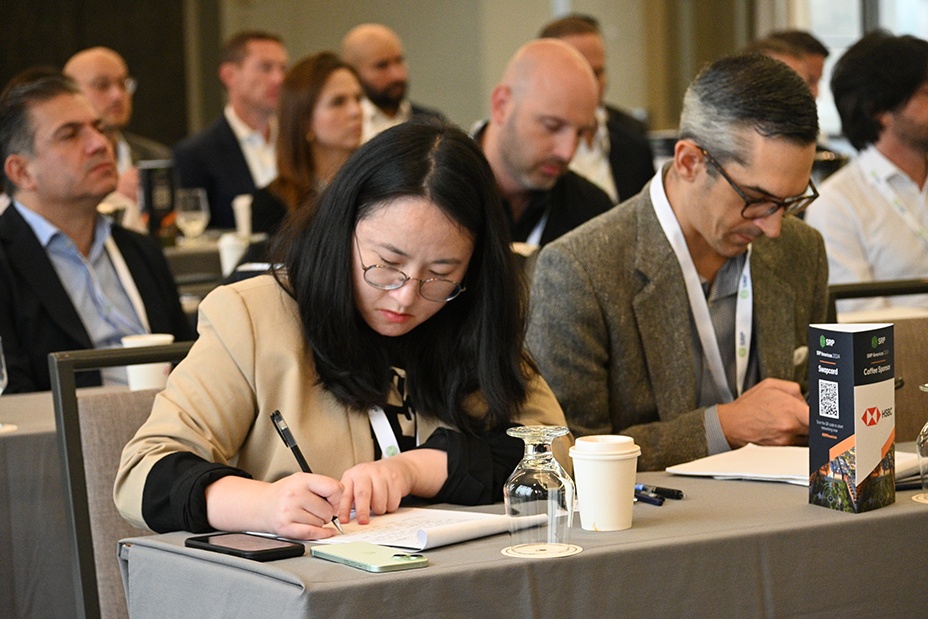Panellists at the SRP Americas 2024 Conference in New Orleans discussed portfolio allocation and capital protection with the long-term goal of preserving wealth.
Bob McDermott (pictured), managing director, national sales manager, InspereX, who moderated the panel, emphasised the importance of downside protection and risk management in the advisory space.
“The ability to have portfolio allocation, some downside protection and talk about risk management certainly resonates with the advisor marketplace, which is why I think we have seen the structured products space grow so much,” said McDermott.
We do spend a lot of time on education as derivatives and options can sometimes be a little scary for those not initiated in it - Peter Montgomery, Carrick Lane
At Carrick Lane, options are used to enhance portfolio yields through separately managed accounts (SMAs), according to Peter Montgomery, partner at the alternative investment management and advisory firm.
“The big advantage is that there is no upfront capital required […] clients’ are using their existing asset allocation and the margin ability of that to support the strategy,” said Montgomery, adding that the company is focusing on the high-net-worth and ultra-high-net-worth segment.
“We do spend a lot of time on education as derivatives and options can sometimes be a little scary for those not initiated in it,” he said.
Educating investors and helping advisors grow their business is also a focus point at Stifel, which covers around 2,300 to 2,500 advisors, according to Nataliya Popel, managing director, structured investments at the brokerage firm.
“I want to stress how valuable principal protection can be in the structured investments vehicle […] we try to educate investors that you do not have to wait for the right market step-in point, because structured investments come in different flavours, shapes and colours.
“There are so many products available that provide very meaningful capital protection for your portfolio,” Popel said.
Vishal Desai, head of structured notes, North America at Citi Global Wealth Management, explained the importance of capital protection and risk redefinition in structured products, addressing two key risks that people tend to worry about.
“One is losses, and the second is volatility or ambiguity of outcomes, or not just knowing what the market is going to do […] structured products with capital protection can address both of those,” said Desai.
“Investors are looking at 60/40 portfolios and are willing to accept five to eight percent to reduce the volatility of their overall portfolio. We have a lot of different ways in our toolkit, with capital preservation to get you five to eight percent and replicate that balance for more portfolios,” he said.
Advisory/brokerage
At this stage, Citi’s platform for structured notes is almost entirely brokerage, although a small percentage of the business has been given over to SMA products, according to Desai.
Two thirds of Carrick Lane’s business falls under advisory – either via a dual contract, or a sub advisory to an investment platform – and a third is more of a brokerage wrapper.
We do advisory, discretionary and non-discretionary – there is a lot to choose from, but currently brokerage is the majority of it - Nataliya Popel, Stifel
“We have a lot of flexibility on how we work with different platforms, based on how they are set up and how they want to implement it and offer it to their clients,” said Montgomery.
At Stifel, brokerage and advisory assets are approximately 50/50, but when it comes to structured investments, the company leans heavily towards brokerage. “Right now, around two percent is advisory […] we do advisory, discretionary and non-discretionary – there is a lot to choose from, but currently brokerage is the majority of it,” Popel said.
McDermott questioned whether the fact that structured products, at least historically, are heavily weighted towards brokerage, is part of the hang up for getting people to look at capital protection strategies in portfolio allocations.
“It makes it more tactical,” said Desai. “A lot of times we see a shift to capital protection after the sell off, rather than before.”
According to Popel, although structured products fit in most portfolio’s, they do not fit in the same way.
“Generally, the portfolios that perform the best over the long term are the measured, laddered portfolios, when they consistently invest in similar strategies and stay with the market and ladder across different levels of protection, different durations, different investment goals on the upside,” Popel said.
Product mix
In the current environment, uncapped buffered nodes with a decent buffered protection and leverage on the upside are “a no brainer”, according to Popel.
“If you are looking to invest in US large cap, or US equally weighted, or if you take a view on one of the European indices, with a buffer note you are in a position to stay the duration and outperform on the upside and downside, regardless of how the market does,” said Popel.
The technology platforms have given us access to information we did not have before - Vishal Desai, Citi Global Wealth Management
Desai added: “What it comes down to is looking at the benchmark risk-free rate and how much we are above it.
“The technology platforms have given us access to information we did not have before […] we can take that extra step and quantify what levels of protection would have meant in a lot of different environments, where we couldn't really say that before. We had to give you full principal protection because we didn't have the back testing […] now we have that data, we can show that,” Desai said.
McDermott emphasized that although the panel had spent most of the time talking about capital protection, there are also clients that have a desire to generate alpha and get returns.
The Stifel strategy team has been constructive on the S&P Equally Weighted index compared to the regular S&P, especially seeing how much the tech sector has gone up, according to Popel.
Stifel has been using the next level of structured products’ flexibility, where the first level is on the structure itself and the second level is on the underlying.
“We have been using similar structures, with leverage, with enhanced yield, but digging a bit more in the underlyings and pairing underlyings in the right way – that could be a nice source of alpha,” Popel said.
“For us it has been equally weighted exposure and other market opportunities, but extracting alpha from the markets that you think will outperform,” Popel concluded.
*This panel was conducted remotely as the impendent arrival of hurricane Francine meant that none of the panellists could fly into New Orleans on 11 September.
Do you have a confidential story, tip or comment you’d like to share? Contact Us | SRP (structuredretailproducts.com)


